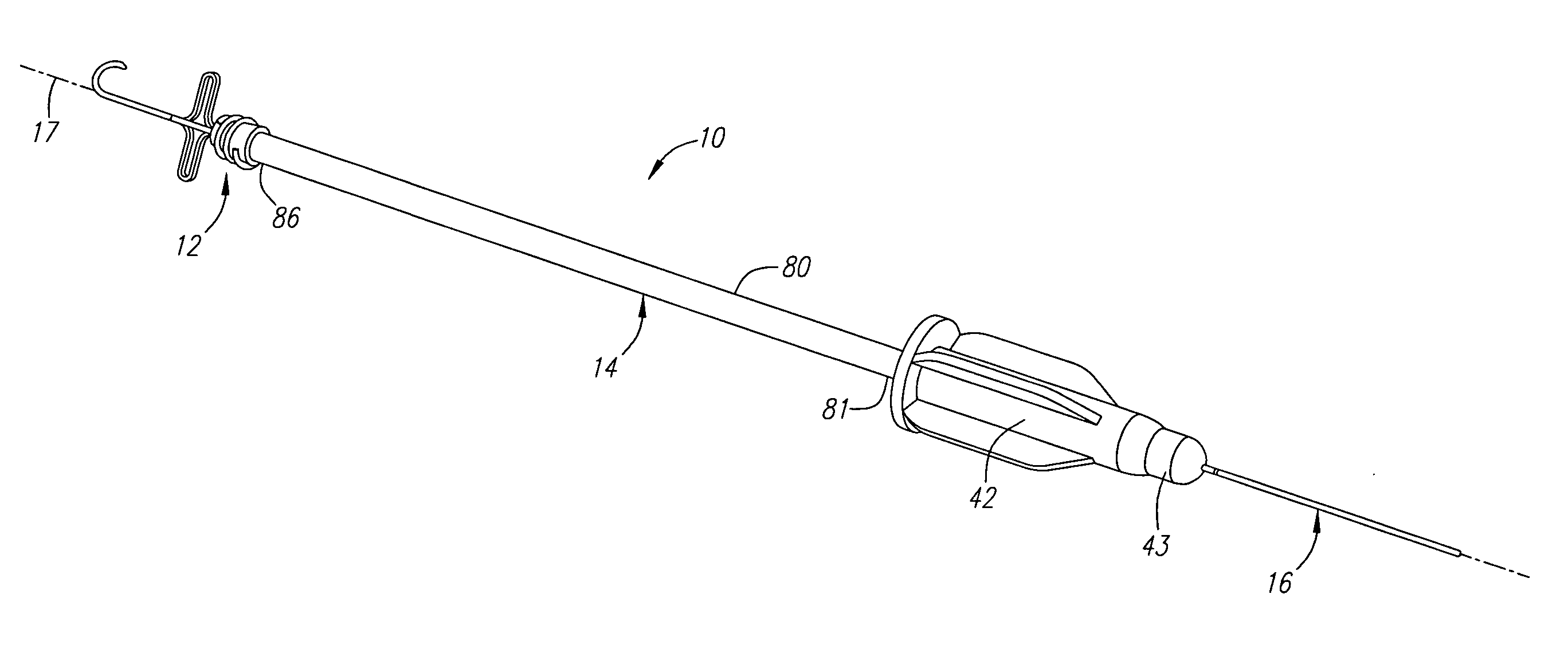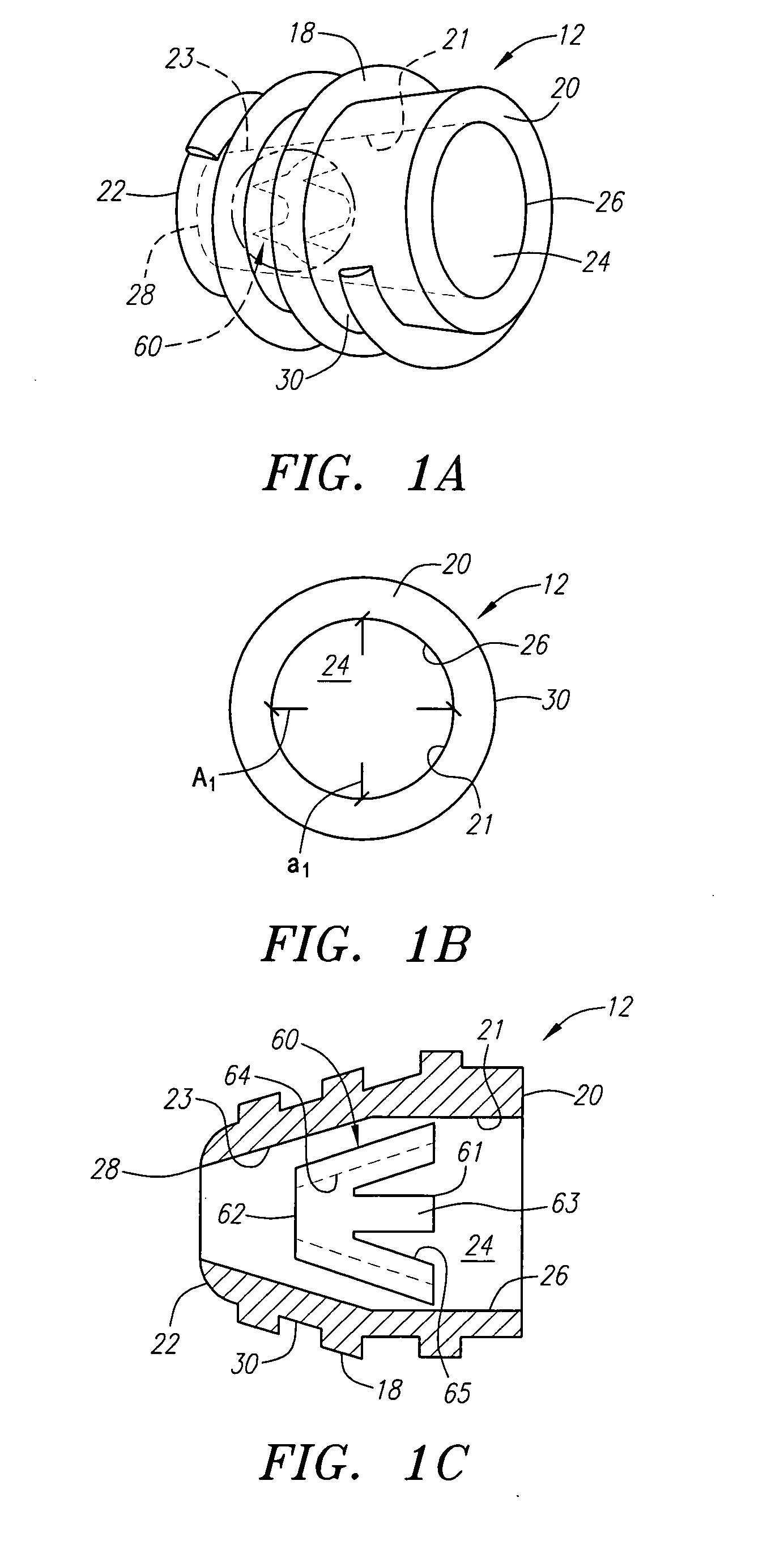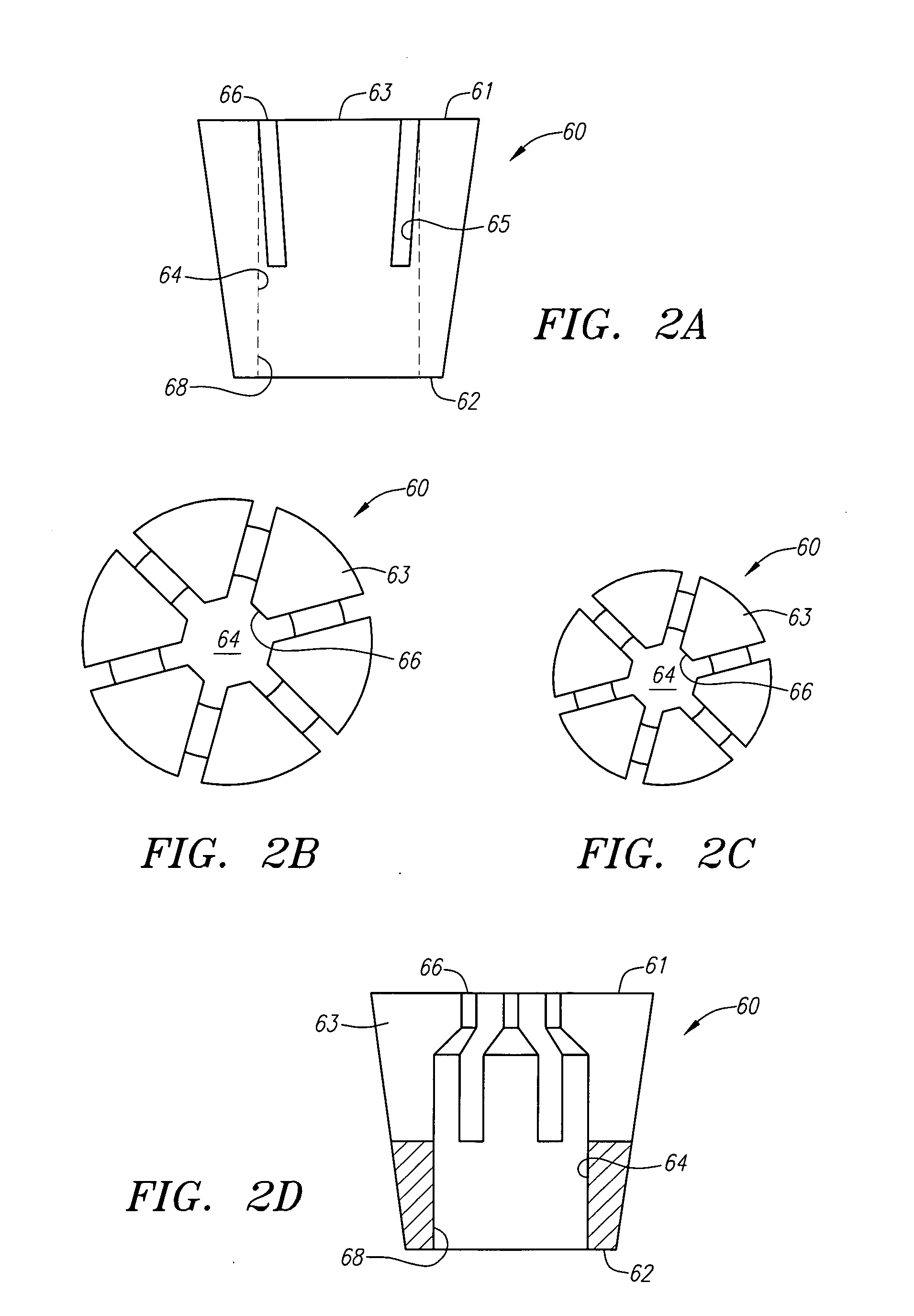Plug with collet and apparatus and method for delivering such plugs
a technology of plugs and collets, which is applied in the field of apparatus and methods for sealing or closing passages through tissue, can solve the problems of time-consuming and expensive procedures, requiring as much as an hour of physician's or nurse's time, and uncomfortable for patients, so as to reduce the cross-sectional region of the lumen.
- Summary
- Abstract
- Description
- Claims
- Application Information
AI Technical Summary
Benefits of technology
Problems solved by technology
Method used
Image
Examples
Embodiment Construction
[0066] Turning now to the drawings, FIGS. 1A, 1B, and 1C show a first preferred embodiment of a plug member 12 for sealing a passage through tissue (not shown), in accordance with the present invention. The plug member 12 is a substantially rigid body, preferably having a generally cylindrical shape, including a proximal end 20, a distal end 22, and an outer surface 30. The plug member 12 includes a lumen 24 that extends between a proximal opening 26 and a distal opening or port 28.
[0067] The plug member 12 may be formed from a biocompatible material, e.g., a plastic, such as polyethylene or polyester. Preferably, the plug member 12 is formed at least partially (and more preferably entirely) from bioabsorbable material, such as collagen, polyglycolic acids (PGA's), polyactides (PLA's), and the like, which may be at least partially absorbed by the patient's body over time. Alternatively, the plug member 12 may be a semi-rigid or flexible body or may have a substantially flexible dis...
PUM
 Login to View More
Login to View More Abstract
Description
Claims
Application Information
 Login to View More
Login to View More - R&D
- Intellectual Property
- Life Sciences
- Materials
- Tech Scout
- Unparalleled Data Quality
- Higher Quality Content
- 60% Fewer Hallucinations
Browse by: Latest US Patents, China's latest patents, Technical Efficacy Thesaurus, Application Domain, Technology Topic, Popular Technical Reports.
© 2025 PatSnap. All rights reserved.Legal|Privacy policy|Modern Slavery Act Transparency Statement|Sitemap|About US| Contact US: help@patsnap.com



